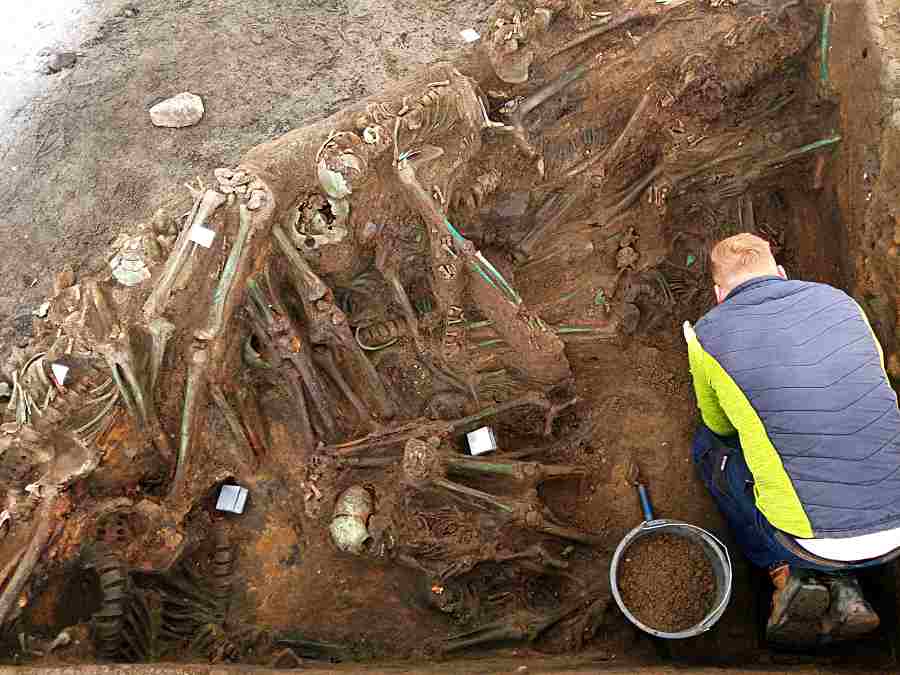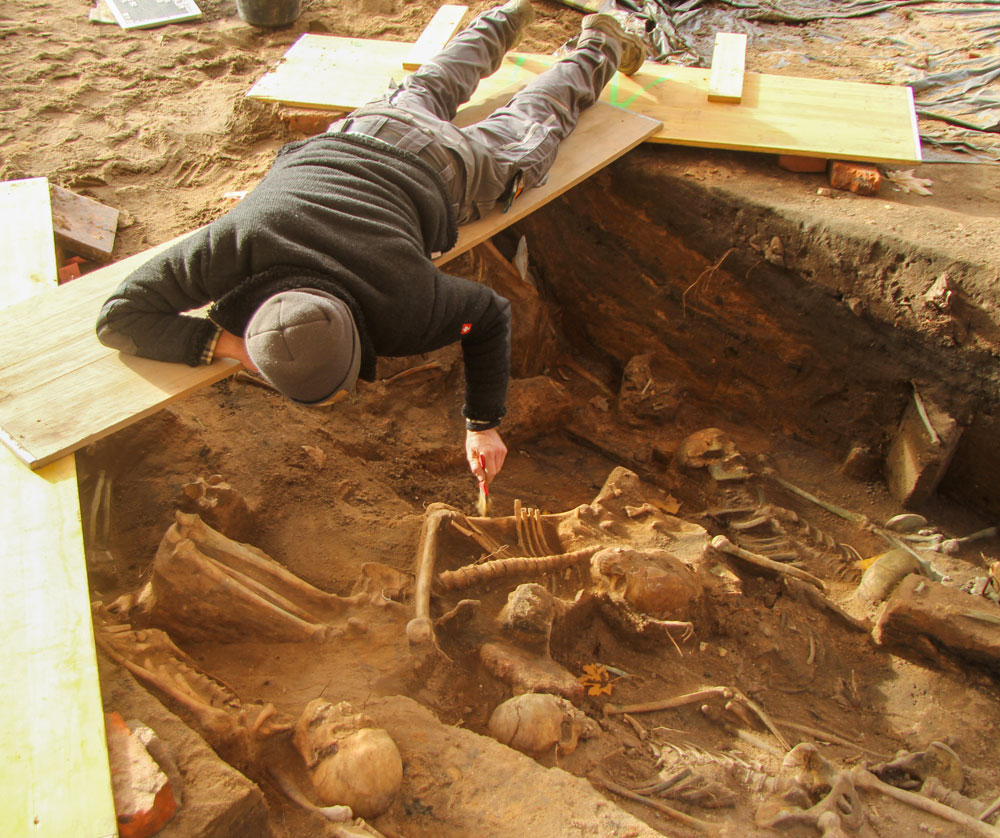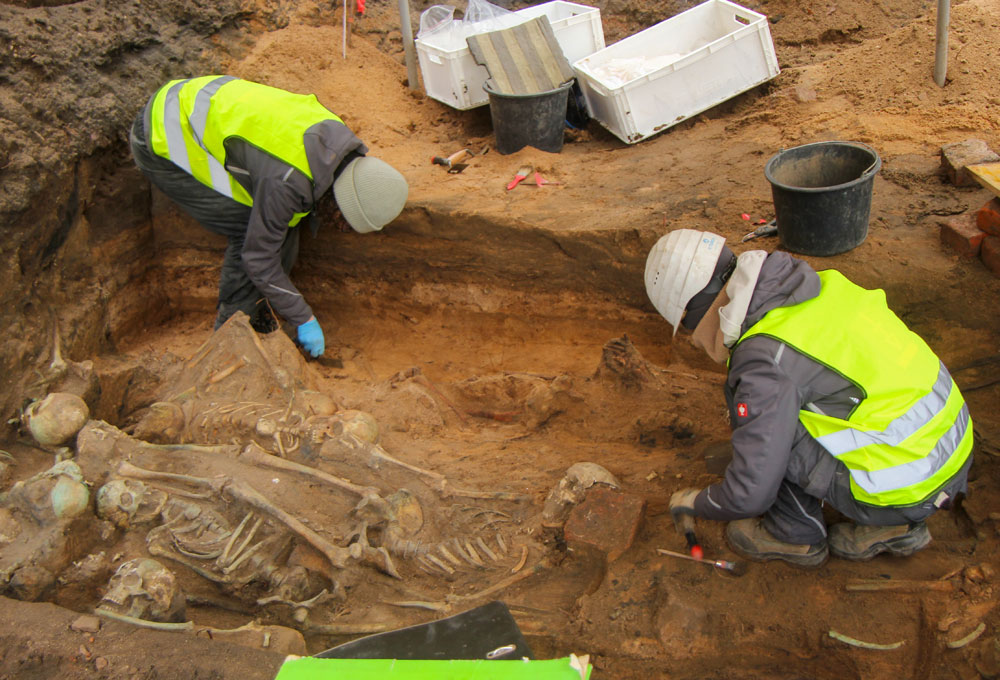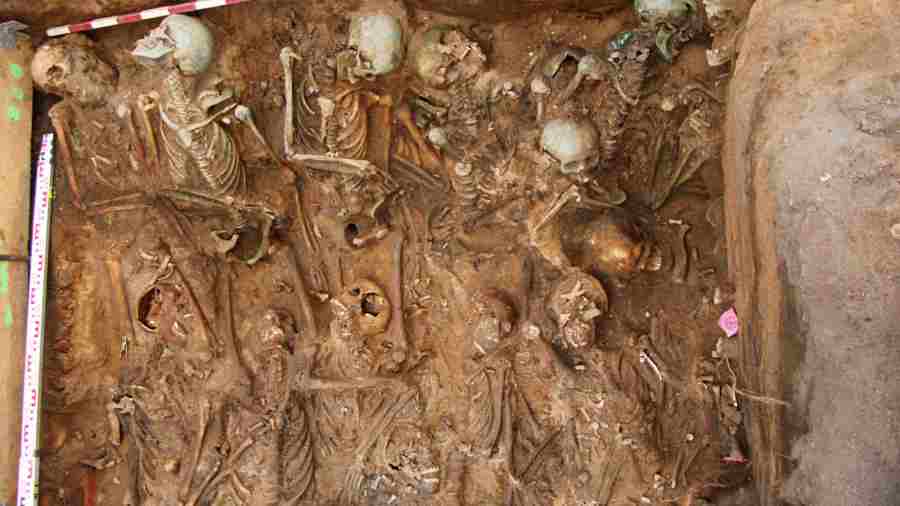Archaeologists in Nuremberg, Germany, made a big discovery while excavating for the construction of a retirement home. They may have discovered the largest mass grave of plague victims in Europe.
Archaeologists have discovered about 1,000 skeletons of plague victims in mass graves at Nuremberg, potentially containing over 1,500 people.

While accurate dating is still awaiting, initial estimates indicate that the eight plague pits were built in the first part of the 17th century. Interestingly, some bones have a green hue, most likely because the location was used to dispose of garbage from a neighboring copper factory.
“We will secure and archive all human remains that are found in the future construction areas,” Nuremberg Department of Heritage Conservation archaeologist Melanie Langbein and chief anthropologist Florian Melzer, told Science Alert.
“We currently assume that once the work is completed in the spring, this will be the largest emergency cemetery for plague victims excavated in Europe,” he added.

Archaeologists are of the opinion that this discovery will be the largest emergency cemetery for plague victims excavated in Europe upon completion of the project in the spring.
Bubonic plague, infamous for devastating pandemics like the Black Death and the Justinian plague, recurred frequently throughout history. Local epidemics have persisted for centuries after the Black Death, affecting cities like Nuremberg.
Unlike conventional plague cemeteries such as St. Rochus in Nuremberg, these bodies were not buried according to Christian traditions, highlighting the critical need for prompt burial during outbreaks.

Further investigation, including DNA testing, is required to confirm the presence of the plague bacteria Yersinia Pestis.
Excavating and examining these remains will reveal vital insights on Nuremberg’s past, in addition to comprehending the circumstances surrounding their deaths.
SOURCE: INDEPENDENT PRESS AND NEWS AGENCIES
______________________________________________________________
FOLLOW INDEPENDENT PRESS:
WhatsApp CHANNEL
https://whatsapp.com/channel/0029VaAtNxX8fewmiFmN7N22
![]()
TWITTER (CLICK HERE)
https://twitter.com/IpIndependent
FACEBOOK (CLICK HERE)
https://web.facebook.com/ipindependent
YOUTUBE (CLICK HERE)
https://www.youtube.com/@ipindependent
Think your friends would be interested? Share this story!





